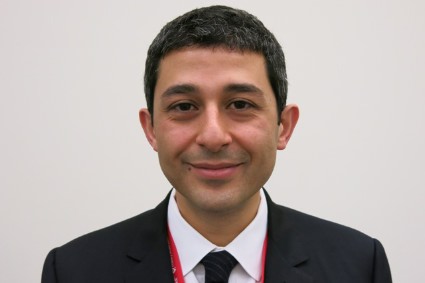Extended monitoring of heart rhythm detected paroxysmal atrial fibrillation in patients who had previously had a "cryptogenic" stroke or transient ischemic attack at significantly higher rates than did conventional methods in two separate, randomized studies published June 26 in the New England Journal of Medicine.
Revealing the occult atrial fibrillation (AF) is critical because stroke survivors whose AF is unrecognized typically receive antiplatelet therapy for secondary prevention, which is inferior to the anticoagulation treatment given for clinically apparent AF, both groups of researchers said.
In one study, investigators used noninvasive ambulatory ECG monitoring to track heart rhythm for 30 days in 572 patients aged 52-96 years (mean age, 72 years) soon after they had an ischemic stroke or transient ischemic attack (TIA). Comprehensive evaluations, typically including the conventional 24-hour session of Holter monitoring, failed to identify any AF or other cause of the event, so it was classified as cryptogenic, said Dr. David J. Gladstone of the division of neurology, University of Toronto, and coleader of the University of Toronto Stroke Program, and his associates.
At 16 stroke centers across Canada, these patients were randomly assigned during a 3-year period to either the prolonged ECG monitoring intervention (287 patients) or to one additional round of 24-hour Holter monitoring (285 control subjects) in the hope of detecting occult AF. The extended ECG monitoring proved superior, detecting at least one episode of AF in 16.1% of patients, compared with only 3.2% in the control group. The extended monitoring also was superior at detecting continuous AF lasting from 2.5 minutes to many hours, which was found in 9.9% of the intervention group vs. only 2.5% of the control group, the investigators reported (N. Engl. J. Med. 2014 June 26 [doi:10.1056/NEJMoa1311376]).
The prolonged monitoring "nearly doubled the proportion of patients who subsequently received anticoagulant therapy for secondary prevention of stroke – a finding we interpret as a clinically meaningful change in treatment that has the potential to avert recurrent strokes," Dr. Gladstone and his associates wrote.
"We think that the common practice of relying on 24-48 hours of monitoring for AF after a stroke or TIA of undetermined cause is insufficient and consider it an initial screen rather than a final test, especially given our finding that the yield of clinical follow-up alone as a means of detecting AF was negligible," they added.
In the other study, conventional follow-up was compared against heart rhythm monitoring using an insertable cardiac monitor (ICM) in 441 patients (mean age, 61.5 years) who recently had an ischemic stroke or TIA classified as cryptogenic. The ICM automatically detected and recorded AF, irrespective of heart rate or symptoms. Patients in the control group "underwent assessment at scheduled and unscheduled visits, with ECG monitoring performed at the discretion of the site investigator," said Dr. Tommaso Sanna of the Institute of Cardiology, Catholic University of the Sacred Heart, Rome, and his associates.
At 6 months, AF was detected in 8.9% of the 221 participants randomly assigned to the study intervention, compared with only 1.4% of the 220 control subjects. At 12 months, the AF detection rates were 12.4% and 2.0%, respectively. This difference in detection was consistent across all subgroups of patients, regardless of age, sex, race/ethnicity, type of index event, presence or absence of patent foramen ovale, and CHADS score, Dr. Sanna and his colleagues said (N. Engl. J. Med. 2014 June 26 [doi:10.1056/NEJMoa1313600])
As was observed in Dr. Gladstone’s study, the use of oral anticoagulants for secondary prevention more than doubled among patients who received an ICM. The benefit of the ICM strategy was clear: only 14 devices would need to be implanted to detect an episode of AF during 6 months of monitoring, only 10 devices to detect an episode of AF during 12 months of follow-up, and only 4 devices to detect an episode of AF during 36 months of follow-up, they noted.
The findings of both studies indicate that in current practice, a substantial number of patients labeled as having cryptogenic stroke or TIA actually have occult AF that goes undiagnosed and untreated.
Dr. Gladstone’s study was supported by the Canadian Stroke Network, the Heart and Stroke Foundation of Ontario, the Bastable-Potts Chair in Stroke, the Heart and Stroke Foundation Canadian Partnership for Stroke Recovery, the University of Toronto, the Brain Sciences Program at Sunnybrook Health Sciences Centre, the Sunnybrook Research Institute, the Sam Sobara family, and the University of Toronto Brill Chair in Neurology. Dr. Gladstone reported receiving support from Bayer, Boehringer Ingelheim, Bristol-Myers Squibb, Daiichi Sankyo, and Pfizer; his associates reported ties to numerous industry sources. Dr. Sanna’s study was supported by Medtronic, maker of the ICM used in the study. Dr. Sanna reported other ties to Medtronic, and his associates reported ties to numerous industry sources.



